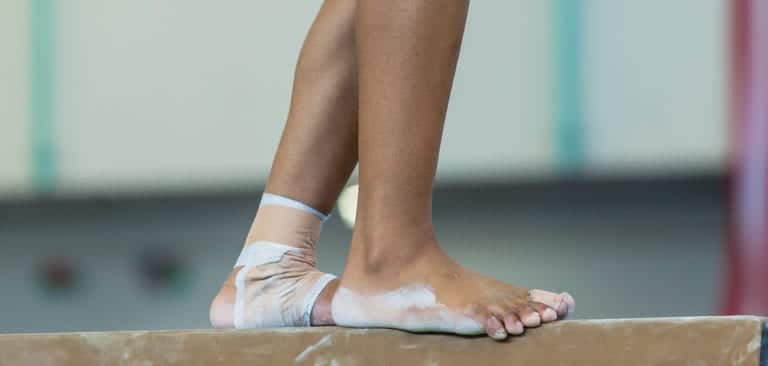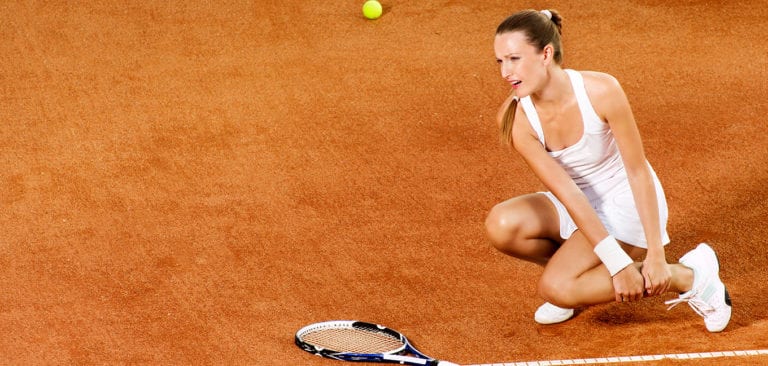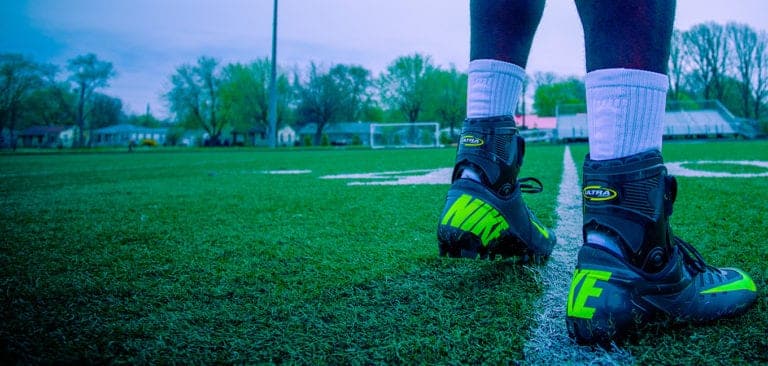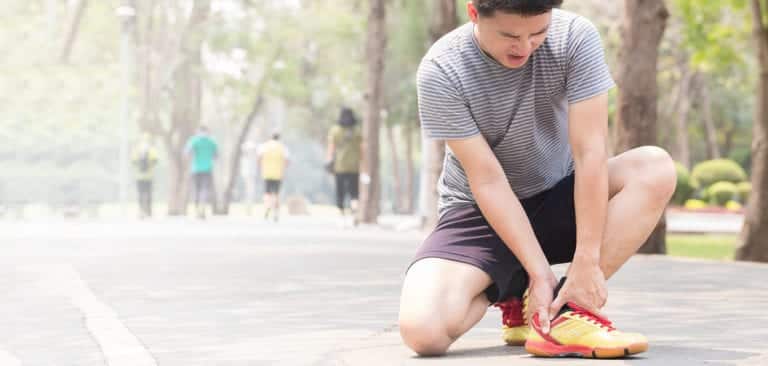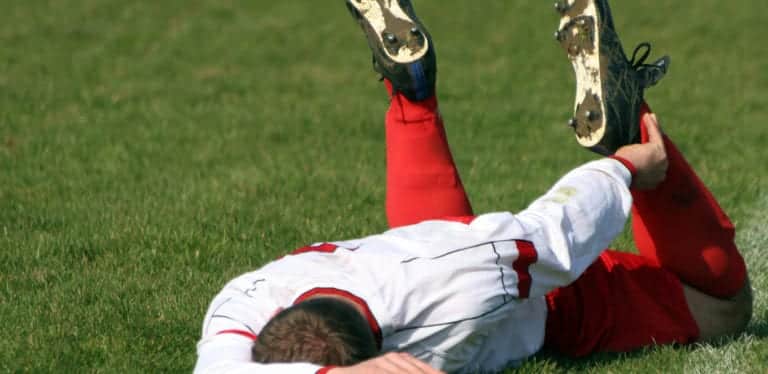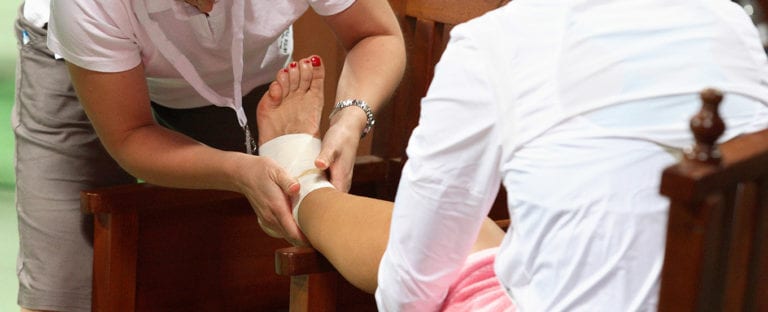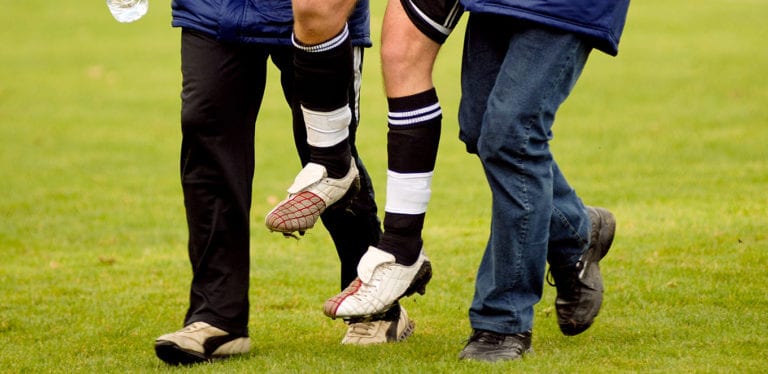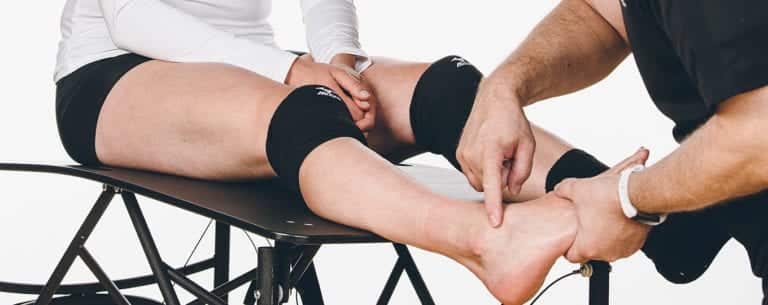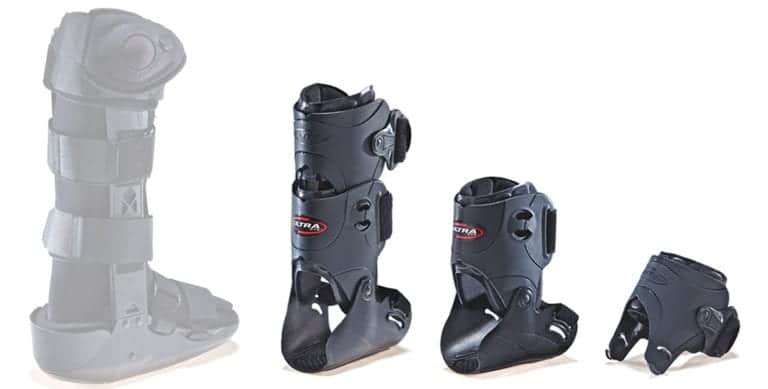
What is your go-to ankle brace for acute ankle injuries? Don’t have one? It turns out you’re not alone.
When it comes to bracing acute ankle injuries, many AT’s end up using a walking boot because they are lacking a sufficient ankle brace alternative. Seeing this void in the marketplace led the ATs at Ultra Ankle to develop the first ankle brace specifically designed to treat/brace acute ankle injuries – the Ultra CTS (Custom Treatment System).
With the Ultra CTS ankle brace we address the two features needed most when bracing acute ankle injuries – maximum ankle and lower leg stabilization combined with reducing weight bearing pain.
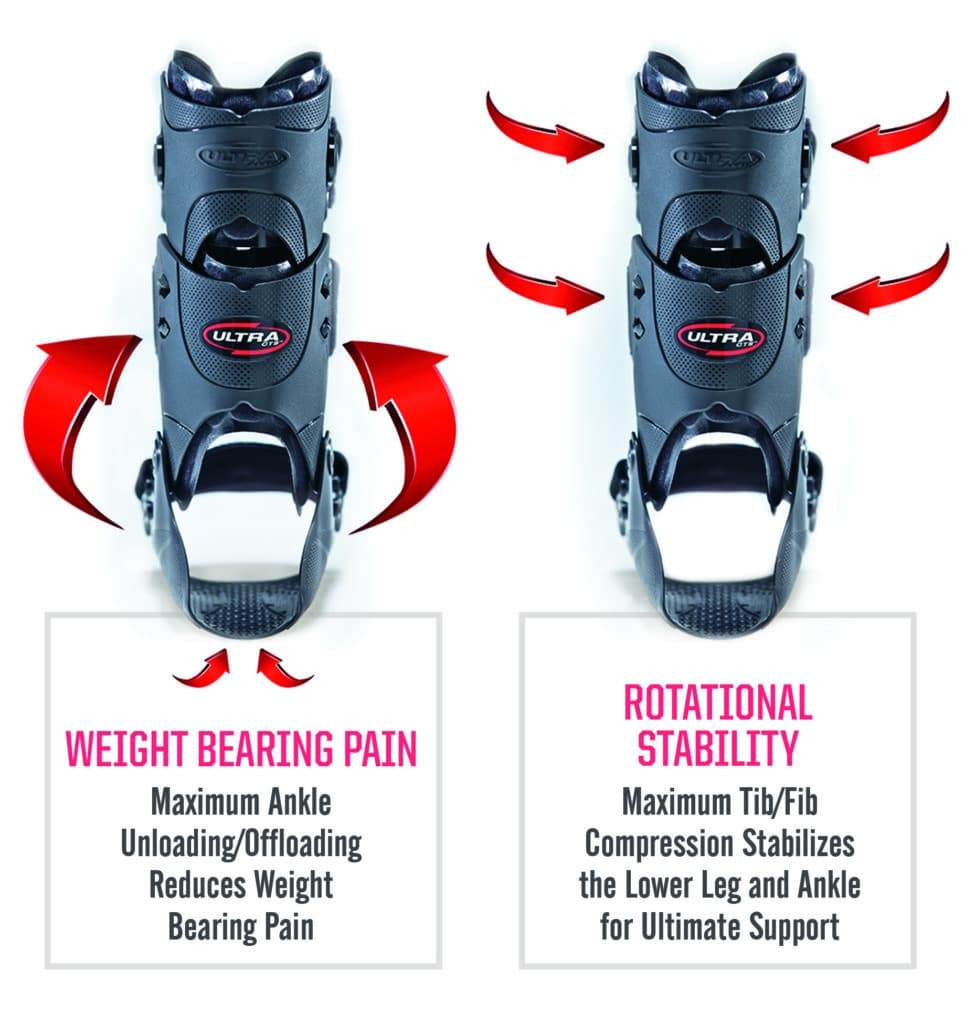
Stabilizing the Ankle and Lower Leg
Let’s say your basketball player comes down from a rebound and lands on another player’s foot, potentially resulting in a grade two ankle sprain. Or your starting tackle gets his ankle rolled up on and now you’re treating his syndesmotic ankle injury. A typical plan of action is to put the player in a walking boot for a day or two to calm things down…but then what?
First things first, you must address the stability issue before the athlete can transition out of the walking boot.
The Ultra CTS has a dual hinged-cuff design that is taller than other braces to compress and stabilize the tibia and fibula. This upper cuff section is made of a flexible soft-shell material (Performathane) which allows the brace to securely encircle the lower leg and ankle providing maximum stability. Our proprietary Performathane® material is made of the highest quality thermoplastic resin – which means it is able to absorb the body heat of the athlete during activity to help it create a form-fitting, secure fit.
When it comes to recovering from an injury, the longer the athlete is in the walking boot the more their ankle strength and ROM are negatively impacted. For this reason, it’s important to have the Ultra CTS® acute injury ankle brace as a part of your transition protocol. With this ankle brace, athletes are able to transition back to activity much sooner and safer than if they went straight from a walking boot to no brace or a lace-up support.
Now, how do you address the weight bearing pain?
Reducing Weight Bearing Pain
The second unique feature of the Ultra CTS design is the ability to unload the ankle to reduce weight bearing pain. We designed the foot section of the Ultra CTS using a semi-rigid material that will absorb some of the impact and/or energy that would normally be directed into the sore and injured ankle. With this foot section in place, the energy bypasses the ankle and is applied to the lower leg. This reduces the impact to the sore ankle (resulting in the athlete feeling less pain) which means they can transition out of the walking boot to a fully functional ankle brace they can wear for the remainder of their rehabilitation.
At this point many athletes will opt to wear the Ultra CTS the remainder of the season because it’s comfortable and they don’t have any fear of reinjury. However, if the athlete would prefer a more mobile ankle brace, they can quickly detach the upper PerformaFit® upper cuff section to transition into a low-profile activity brace. Either way, you now have options when bracing and treating acute ankle injuries that will safely get your athletes back to full participation faster.
Treat In-Game Ankle Injuries
Aside from being an important part of your treatment and rehab protocol, the Ultra CTS is also widely used by collegiate and pro athletic trainers to treat in-game ankle injuries.
After an athlete suffers an in-game ankle injury, most of the time the only thing preventing them from returning to the game is their weight bearing pain. Tape and lace-ups cannot unload the ankle and reduce weight bearing pain – but the Ultra CTS can. Athletic trainers, especially in football, are consistently utilizing the Ultra CTS on in-game ankle injuries (when appropriate) to allow the player to return to competition during the same game.
Are you one of the many athletic trainers prepared for acute and/or in-game ankle injuries by having an Ultra CTS in your kit? If not, let us know what it would take to get you to try it out by sending us an email at [email protected] or leaving us a note in the comments below.
SHARE WITH FRIENDS
RECENT POSTS
POST BY TOPIC
- Acute Ankle Injuries (7)
- Ankle Bracing (33)
- Ankle Injuries (17)
- Ankle Injury Prevention (19)
- Ankle Instability (4)
- Athletic Trainers (2)
- Athletic Training (3)
- Basketball (6)
- Football (9)
- Hiking (2)
- injury (2)
- Mild/Moderate Ankle Injury (2)
- News (2)
- Osteoarthritis (5)
- Pickleball (3)
- Soccer (4)
- Sports (17)
- Tennis (3)
- Ultra 360 Lace-Up (2)
- Ultra CTS (6)
- Ultra Zoom (9)
- Uncategorized (2)
- Volleyball (8)
